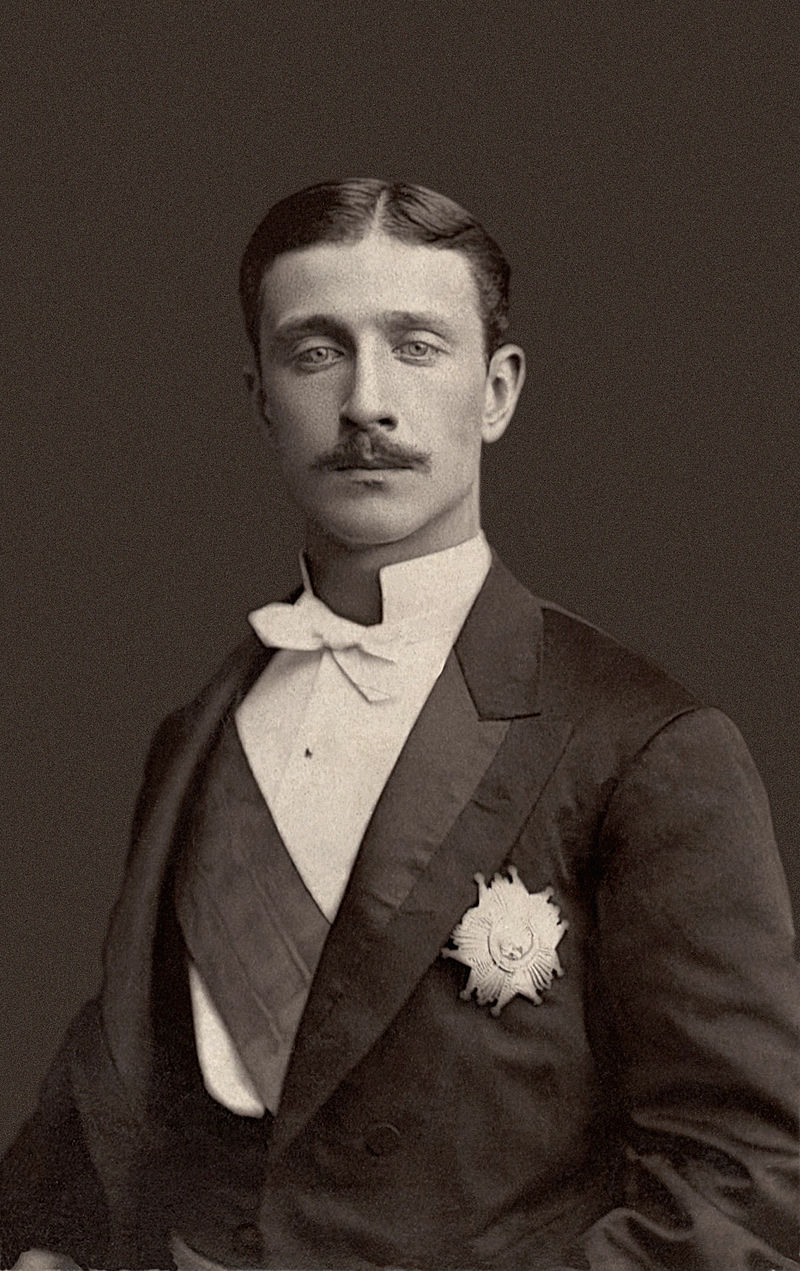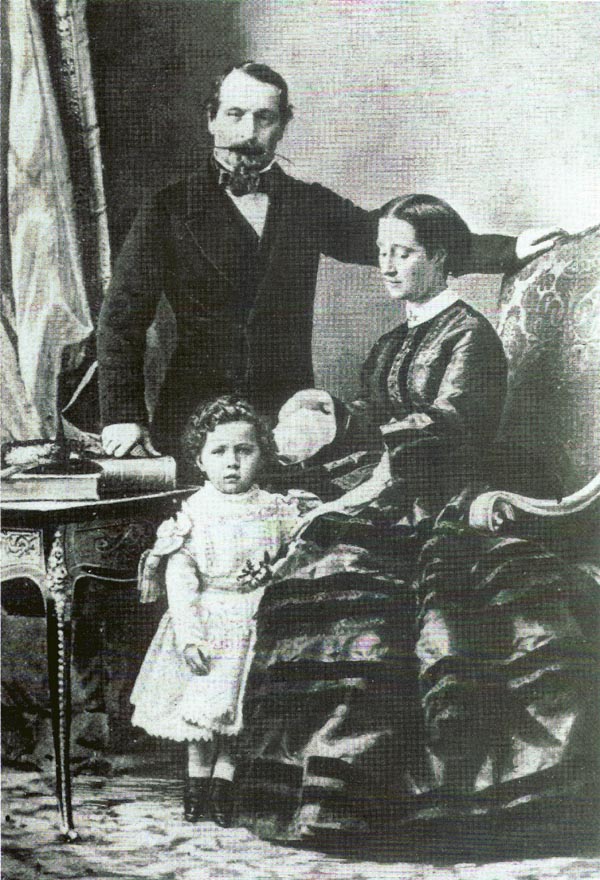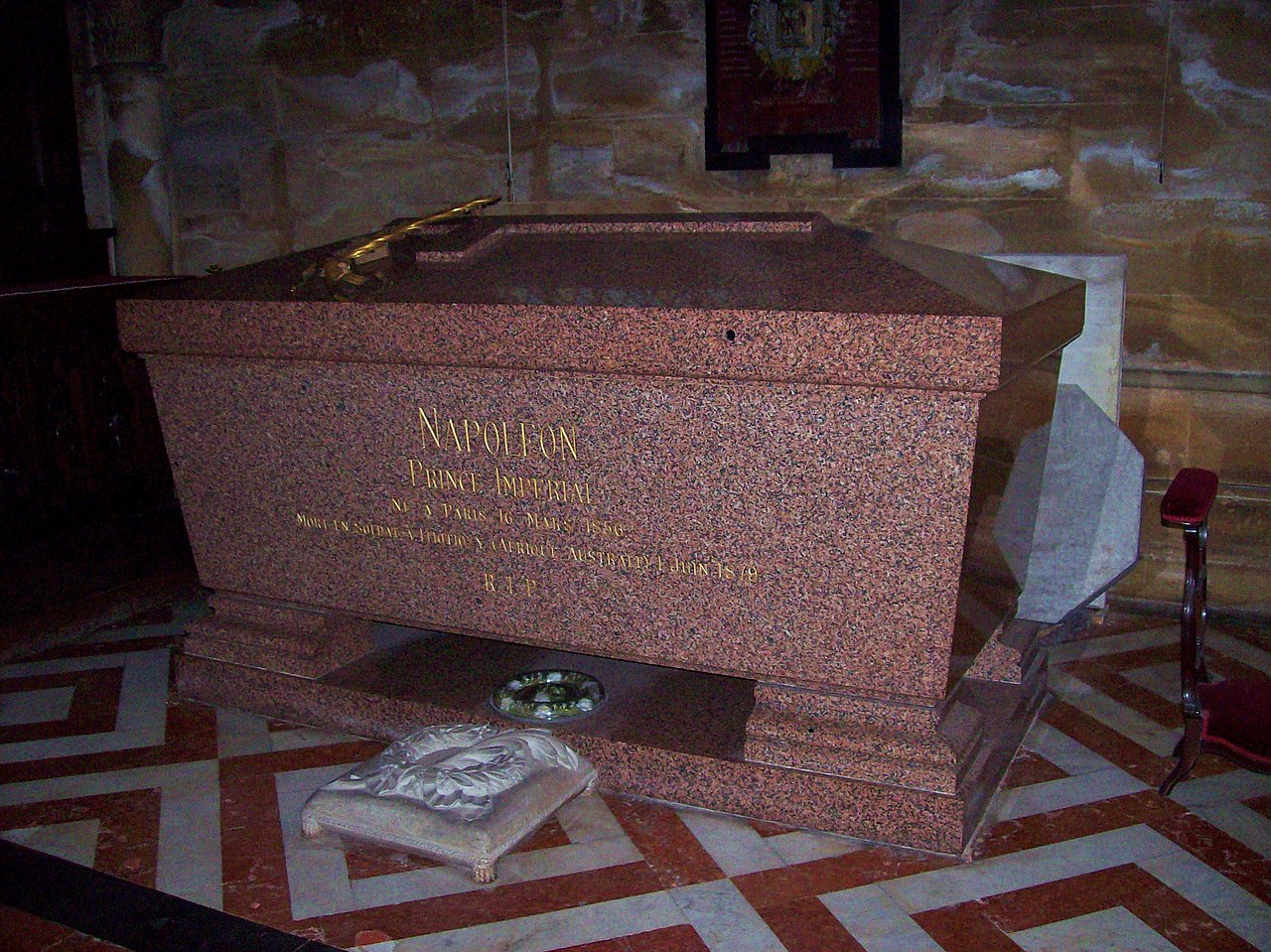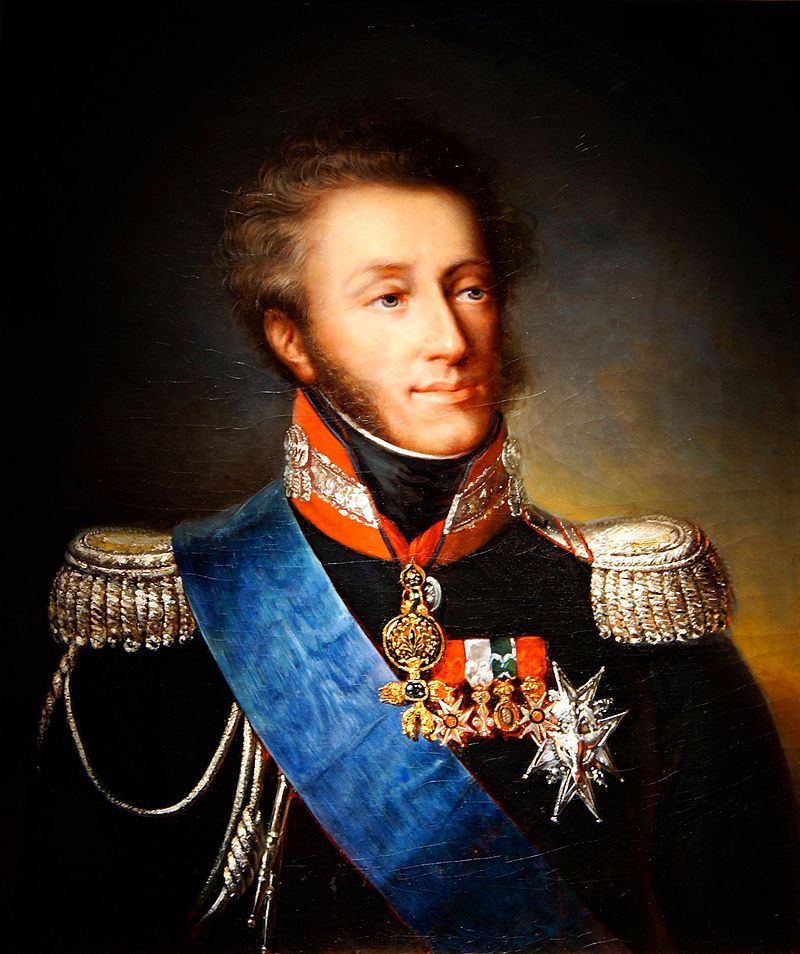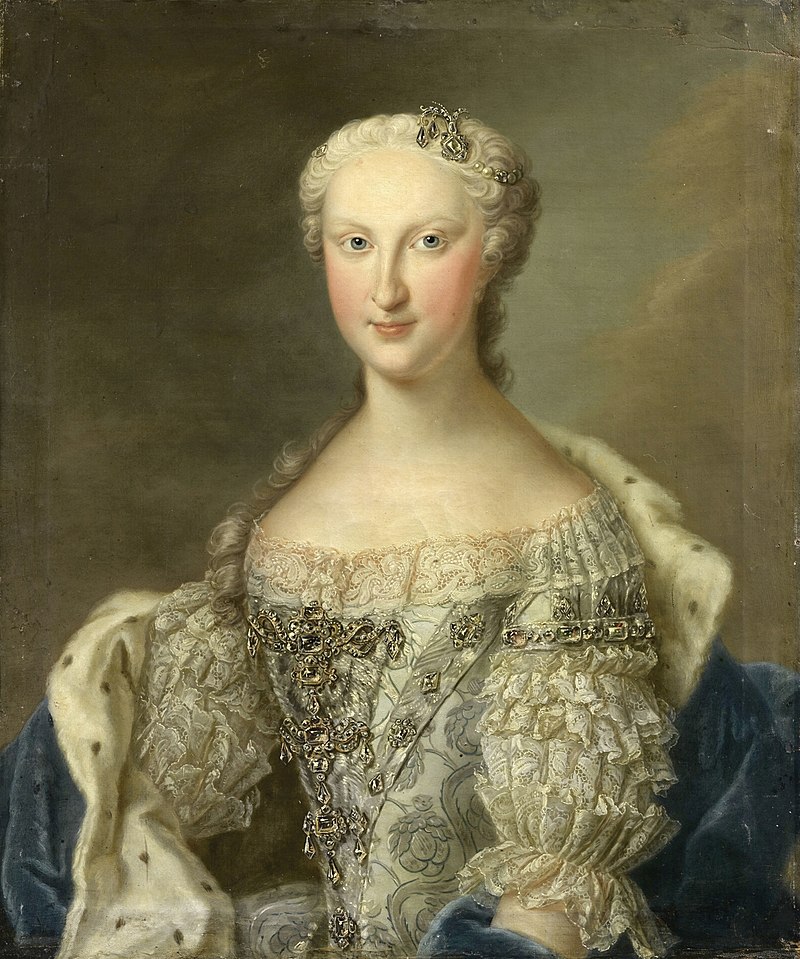by Susan Flantzer © Unofficial Royalty 2019

Marie-Thérèse of France, Duchess of Angoulême; Credit – Wikipedia
The only one of the four children of Louis XVI, King of France and Maria Antonia, Archduchess of Austria (better known as Marie Antoinette), to reach adulthood, Marie-Thérèse of France married her first cousin Louis Antoine, Duke of Angoulême, the eldest son of the future Charles X, King of France. She was born at the Palace of Versailles in France on December 19, 1778, the first child after eight years of her parents’ marriage. As the eldest daughter of the King of France, she was styled Madame Royale at birth. She was named Marie-Thérèse Charlotte after her maternal grandmother Maria Theresa, Archduchess of Austria, and Queen Regnant of Hungary, Croatia, and Bohemia and her maternal aunt Maria Carolina of Austria, Queen of Naples and Sicily who was known as Charlotte.
Marie-Thérèse had three younger siblings:

Queen Marie Antoinette with her children – left to right: Marie-Thérèse, Queen Marie Antoinette with Louis-Charles (the future Dauphin) on her lap, Louis-Joseph-Xavier-François, Dauphin of France pointing into an empty cradle; Sophie-Hélène-Béatrix originally was in the cradle but was painted out after her death; Credit – Wikipedia
Victoire de Rohan, Princess of Guéméné was the head of Marie-Thérèse’s household which had a staff of over one hundred courtiers and servants. When Marie-Thérèse was four years old, the Princess of Guéméné was forced to resign due to a scandal created by her husband’s huge debt. Gabrielle de Polastron, Duchesse de Polignac, the favorite of Marie Antoinette, was then appointed the head of the household. Marie-Thérèse grew up at the Palace of Versailles in luxury but her mother often invited children of lower rank to dine with Marie-Thérèse and encouraged her to give her toys to the poor.

Marie-Thérèse in 1786; Credit – Wikipedia
Marie-Thérèse was eleven years old when the French Revolution started in 1789. Soon, her father King Louis XVI lost much of his absolute power to the National Constituent Assembly. The majority of the French people saw no benefit in retaining the monarchy. After a failed attempt to escape Paris in 1791 ended what little support was left for the monarchy, the royal family was held under house arrest at the Tuileries Palace in Paris. On June 20, 1792, a mob broke into the Tuileries Palace, threatening the royal family. Spared this time, their luck would run out two months later when another mob stormed the palace on August 10, 1792.

The Temple where the French royal family was imprisoned: Credit – Wikipedia
This time, the family sought refuge at the Legislative Assembly but were arrested several days later and imprisoned at the Temple, the remains of a medieval fortress in Paris. On September 21, 1792, France officially abolished the monarchy and became a republic. Marie Antoinette, her husband, and their family were stripped of their titles and honors, becoming known as Monsieur and Madame Capet. Louis XVI was soon separated from his family and charged with undermining the French Republic. He was tried, found guilty, and sentenced to death. The former King Louis XVI was executed by guillotine on January 21, 1793. Royalists recognized Louis XVI’s imprisoned son Louis-Charles as King Louis XVII of France.
On July 3, 1793, guards entered the royal family’s lodgings in the Temple and forcibly took away Marie-Thérèse’s eight-year-old Louis-Charles. Remaining with Marie-Thérèse were her mother Marie Antoinette and Élisabeth, Louis XVI’s youngest sister. When Marie Antoinette was taken to the Conciergerie for trial one month later, Marie-Thérèse was left in the care of her aunt Élisabeth. On October 16, 1793, Marie Antoinette was executed by the guillotine. Marie-Thérèse’s aunt Élisabeth was taken away on May 9, 1794, and executed the following day. Of all the royal prisoners in the Temple, Marie-Thérèse was the only one to survive.
During her imprisonment, Marie-Thérèse was never told what had happened to her family. All she knew was that her father was dead. Finally, she was told by Madame Renée de Chanterenne, her female companion, in August 1795. On December 18, 1795, the day before her seventeenth birthday, Marie-Thérèse was exchanged for prominent French prisoners and released from the Temple. She was taken to Vienna, her mother’s birthplace, where her first cousin Franz II reigned as Holy Roman Emperor.

Marie-Thérèse in Vienna in 1796, note that she is in mourning dress and is wearing a cameo necklace with the images of her parents; Credit – Wikipedia
In Vienna, Marie-Thérèse met the many members of her mother’s family and quickly formed relationships with them even though she held her cousin Franz II responsible for her mother’s death because of his inaction. In 1796, Marie-Thérèse refused to marry Archduke Charles of Austria, Duke of Teschen, brother of Franz II, Holy Roman Emperor, whom she considered an enemy of France.
The two younger brothers of King Louis XVI had fled France with their families: the elder Louis-Stanislas (the future King Louis XVIII) fled to the Austrian Netherlands in 1791 and the younger Charles (the future King Charles X) fled to Savoy in 1789. After Marie-Thérèse’s brother died in 1795, Louis-Stanislas, Louis XVI’s elder surviving brother, became the titular King of France as Louis XVIII. In 1798, he was given a very large pension and the use of Jelgava Palace in Courland (now Latvia) by Paul I, Emperor of All Russia. At Jelgava Palace, Louis-Stanislas attempted to recreate the pomp and ceremony of the court of Versailles. On May 3, 1799, Marie-Thérèse left Vienna to join her uncle in exile at Jelgava Palace.

Louis-Antoine, Duke of Angoulême, Marie-Thérèse’s husband; Credit – Wikipedia
With no children of his own, Louis-Stanislas wished his niece Marie-Thérèse to marry her first cousin Louis-Antoine, Duke of Angoulême, son of his younger brother Charles, for dynastic reasons. He convinced Marie-Thérèse to agree to the marriage by telling her it would be what her parents wanted. Louis-Antoine was a shy, stammering, small, and awkwardly built young man. His father Charles tried to persuade Louis-Stanislas against the marriage. However, the wedding took place on June 10, 1799, at Jelgava Palace. The couple had no children and the marriage was not a happy one.
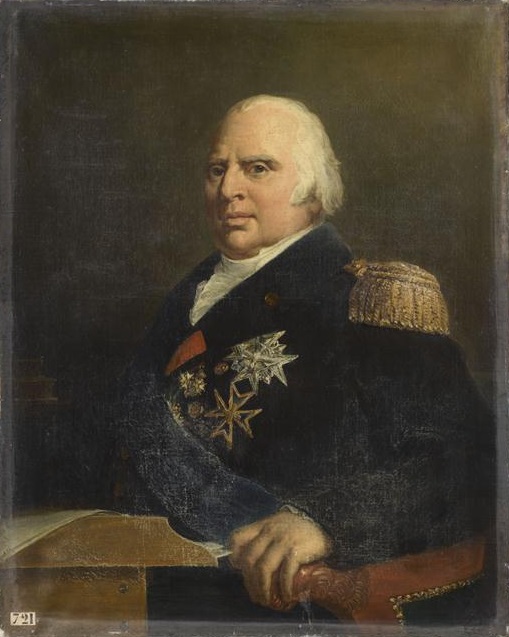
Marie-Thérèse’s uncle Louis-Stanislas, King Louis XVIII; Credit – Wikipedia
From the time of her marriage, Marie-Thérèse was closely linked to her uncle Louis-Stanislas and shared more of her uncle’s life than that of her husband. She used her image of “martyrdom of the Revolution” to rally the royalists and interest the European rulers in her uncle’s cause to restore the Bourbon monarchy. Marie-Thérèse followed her uncle to the various places he lived in exile. In 1803, Napoleon Bonaparte tried to force Louis-Stanislas to give up his rights to the French throne, which he refused. Napoleon Bonaparte declared himself Emperor of the French in 1804.
In April 1814, following Napoleon’s overthrow, the French Senate restored the Bourbons to the French throne and Louis-Stanislas officially became King Louis XVIII. Returning to France was emotionally draining for Marie-Thérèse. She visited the site where her brother had died and the Madeleine Cemetery where her parents were buried. On January 21, 1815, the 22nd anniversary of Louis XVI’s execution, the remains of Louis XVI and Marie Antoinette were re-interred at the Basilica of Saint-Denis, the traditional burial site of the Kings of France and the French royal family. In February 1815, Napoleon escaped from his imprisonment on the island of Elba and returned to France but his reign was over when he was defeated at the Battle of Waterloo on June 18, 1815, and King Louis XVIII was restored to the throne.

The French Royal Family in 1823 – left to right: Marie-Thérèse, Duchess of Angoulême; Louis-Antoine, Duke of Angoulême; Prince Henri de Bourbon; Charles-Philippe, Count of Artois; King Louis XVIII of France; Princess Louise-Marie-Thérèse d’Artois; Marie-Caroline, Duchess of Berry
King Louis XVIII died on September 16, 1824, and was succeeded by his younger brother King Charles X. As the eldest son of the King, Marie-Thérèse’s husband Louis-Antoine was heir to the throne and became Dauphin of France while his wife became Dauphine. Within a few years, anti-monarchist feelings were on the rise again. Charles X’s ultra-royalist sympathies alienated many members of the working and middle classes. This led to the July Revolution of 1830. On August 2, 1830, King Charles X was forced to abdicate the French throne. He skipped over his son and named his grandson Henri, Duke of Bordeaux his successor. However, this did not sit well with Louis Philippe, Duke of Orléans, the Orléanist claimant to the French throne. He took the throne on August 9, 1830, taking the title King of the French.
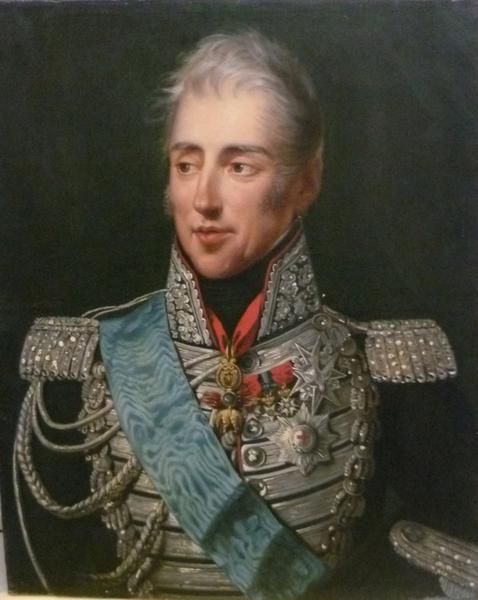
Marie-Thérèse’s uncle and father-in-law Charles X; Credit – Wikipedia
Once again, Marie-Thérèse lived in exile, this time with the former King Charles X, her uncle and her father-in-law, and her husband Louis-Antoine, who had technically been King of France for less than 20 minutes on August 2, 1830, before he abdicated. First, they lived in Edinburgh, Scotland where Marie-Thérèse and Louis-Antoine took up residence in a house at 22 Regent Terrace near Holyrood Palace where the former Charles X was living. In 1832, the family moved to Prague Castle at the invitation of Marie-Thérèse’s cousin, now Franz I, Emperor of Austria as there was no more Holy Roman Empire. After Emperor Franz died in 1835, the exiles moved to the estate of Count Johann Baptist Coronini near Gorizia, which was in Austria but now in Italy.

The Villa Coronini in Gorizia; Credit – Wikipedia
The former King Charles X of France died from cholera on November 6, 1836, in Gorizia at the age of 79. Eight years later, Louis-Antoine, his son and Marie-Thérèse’s husband, died on June 3, 1844, aged 68, also in Gorizia. Marie-Thérèse then moved to the Schloss Frohsdorf, just outside Vienna, where she spent her days taking walks, reading, sewing, and praying. She died from pneumonia at the Schloss Frohsdorf on October 19, 1851, at the age of 72. The former Charles X, his son Louis-Antoine and Marie-Thérèse were all buried at the Kostanjevica Monastery. The monastery had originally been in Gorizia but in 1947, the border between Italy and Yugoslavia was set just a few hundred meters westward from the monastery, and the monastery became part of the newly established town of Nova Gorica, then in Yugoslavia, now in Slovenia.

Tombs of Louis-Antoine, Charles X and Marie-Thérèse; Credit – Wikipedia
This article is the intellectual property of Unofficial Royalty and is NOT TO BE COPIED, EDITED, OR POSTED IN ANY FORM ON ANOTHER WEBSITE under any circumstances. It is permissible to use a link that directs to Unofficial Royalty.
Works Cited
- En.wikipedia.org. (2018). Louis Antoine, Duke of Angoulême. [online] Available at: https://en.wikipedia.org/wiki/Louis_Antoine,_Duke_of_Angoul%C3%AAme [Accessed 2 Nov. 2018].
- En.wikipedia.org. (2018). Marie Thérèse of France. [online] Available at: https://en.wikipedia.org/wiki/Marie_Th%C3%A9r%C3%A8se_of_France [Accessed 2 Nov. 2018].
- En.wikipedia.org. (2018). Marie Thérèse of France. [online] Available at: https://en.wikipedia.org/wiki/Marie_Th%C3%A9r%C3%A8se_of_France [Accessed 2 Nov. 2018].
- Fr.wikipedia.org. (2018). Marie-Thérèse de France (1778-1851). [online] Available at: https://fr.wikipedia.org/wiki/Marie-Th%C3%A9r%C3%A8se_de_France_(1778-1851) [Accessed 4 Nov. 2018].
- Mehl, S. (2016). King Charles X of France. [online] Unofficial Royalty. Available at: https://www.unofficialroyalty.com/king-charles-x-of-france/ [Accessed 2 Nov. 2018].
- Mehl, S. (2016). King Louis XVIII of France. [online] Unofficial Royalty. Available at: https://www.unofficialroyalty.com/king-louis-xviii-of-france/ [Accessed 2 Nov. 2018].
- Mehl, S. (2016). Maria Antonia of Austria, Queen of France (Marie Antoinette). [online] Unofficial Royalty. Available at: https://www.unofficialroyalty.com/maria-antonia-of-austria-queen-of-france-marie-antoinette/ [Accessed 2 Nov. 2018].
- Nagel, S. (2008). Marie Thérèse: The Fate of Marie Antoinette’s Daughter. New York: Bloomsbury.






